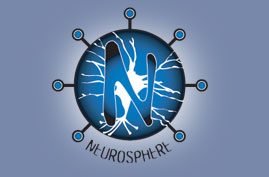As neuroscience identifies more and more neural correlates of movement and thought, prosthetic interconnection seems to follow on more closely.
“For years, researchers have dreamed of devising prosthetic devices that paralyzed people could operate by brain signals alone. So far, patients’ brain waves (electroencephalogram recordings) have controlled simple computer programs, and robots and cursors have moved under the guidance of brain cells that dictate motion (Science, 24 January 2003, p. 496). Until now, however, nobody has succeeded in tapping the messages of higher-order neurons involved in planning and motivation for potential use in prosthetics. On page 258, neurophysiologists Richard Andersen and Sam Musallam of the California Institute of Technology in Pasadena and their colleagues report eavesdropping on neurons in a cognitive brain area involved in planning–but not executing–future arm movements.”
http://www.sciencemag.org/cgi/content/full/305/5681/162a?maxtoshow=&HITS=20&hits=20&RESULTFORMAT=&author1=Wickelgren&andorexacttitle=or&andorexacttitleabs=or&andorexactfulltext=or&searchid=1133974269596_11257&stored_search=&FIRSTINDEX=0&sortspec=relevance&fdate=10/1/1995&tdate=12/31/2005
Meanwhile, the Center for Consciousness Studies coordinates the ongoing attempts to nail down the neural correlates of consciousness, assuming that is they can define what consciousness is. The contention of some is that neural prosthetics tackly the “easy problem” – what neurons are associated with what activities. The “hard problem” is, where in the brain is located “the feeling of what happens”.
http://www.consciousness.arizona.edu/index.htm
